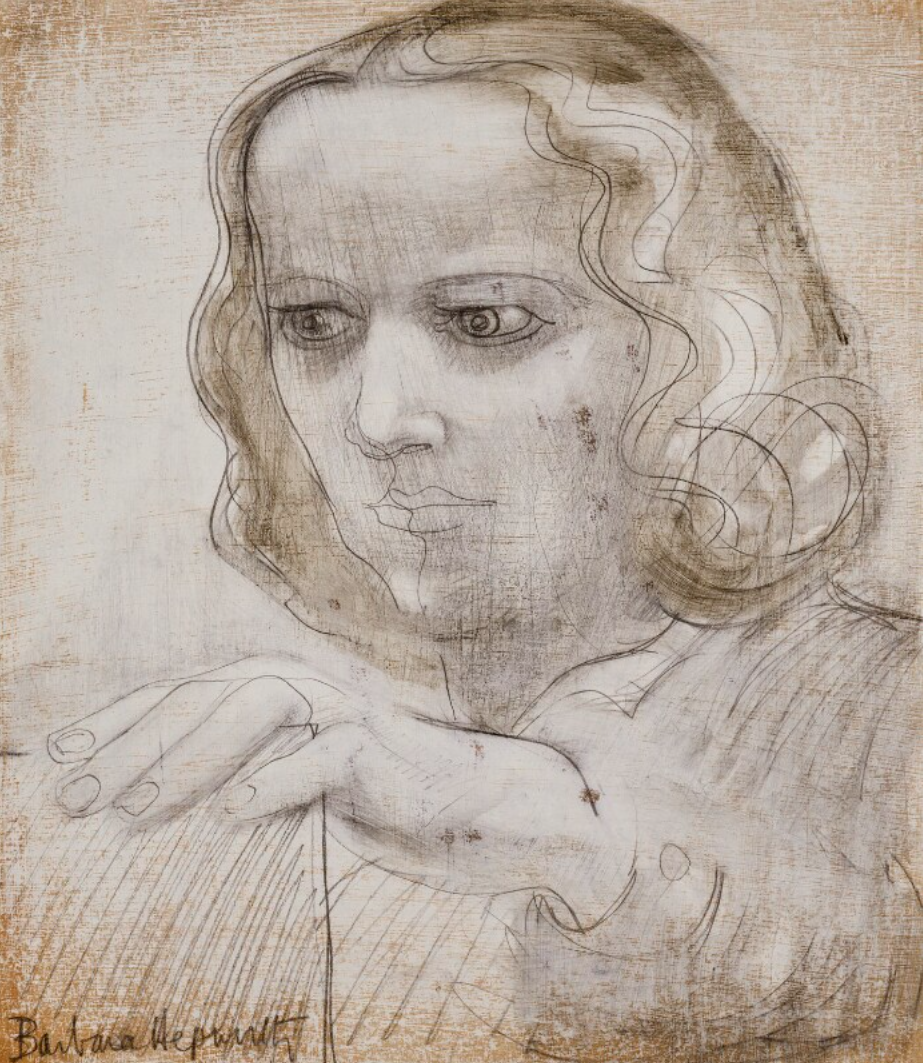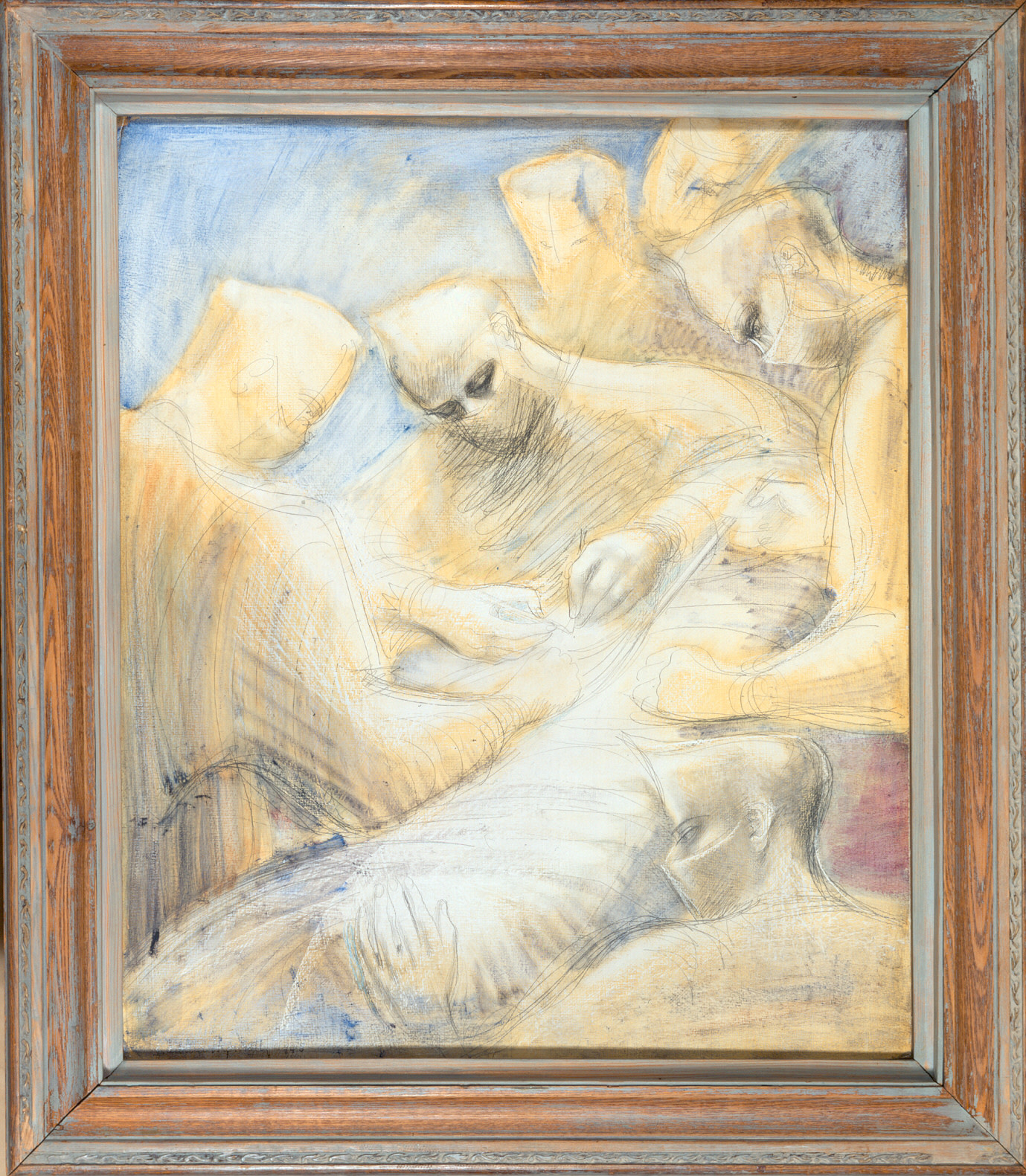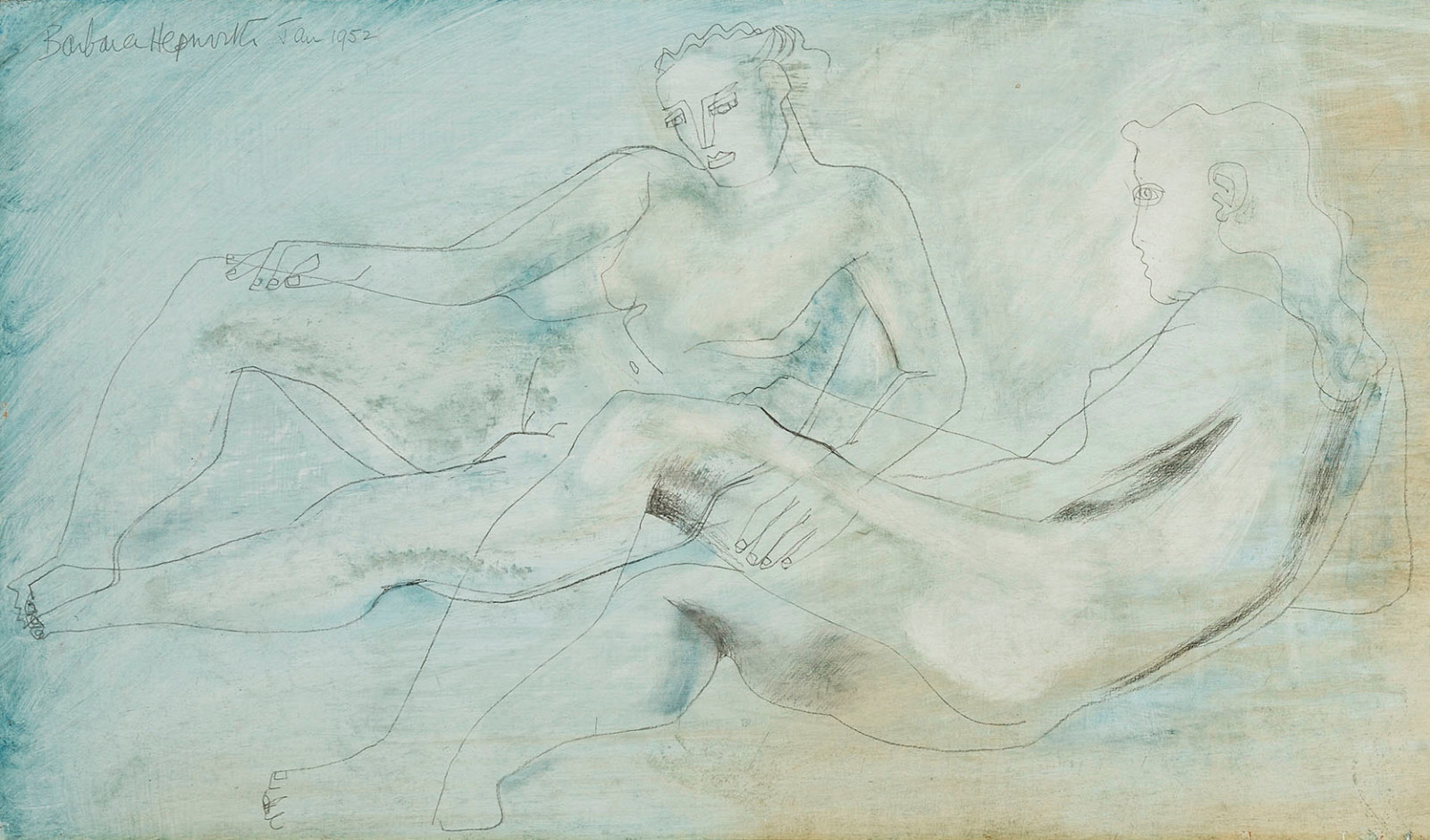Over the next two weeks, InSight presents two works by one of the great sculptors of the twentieth century: Barbara Hepworth.
Barbara Hepworth’s (1903–1975) attitude to drawing varied over the course of her career. In a note on technique written in 1962, she stated that ‘I use drawing and painting for the exploration of forms and depths which lead finally to the idea of a new sculpture’. Ten years earlier, however, in the late 1940s and the early 1950s, a less sculpture-oriented approach to drawing was apparent. With a pencil and washes of thinned oil paint or gouache, Hepworth developed a personal graphic mode which she used to depict the human form.

For two years between 1947 and 1949, Hepworth made a series of drawings which depict surgeons in the operating theatre. These works, known as the hospital drawings, received a dedicated exhibition at The Hepworth Wakefield in 2012 and 2013. Most have titles that describe either the operation or the relationship and number of the figures present (‘quartet’, ‘two figures’, ‘concourse’). Though these works are commonly described as ‘drawings’, and though they were made in part using pencil, the visual outcome is considerably more complex than this term suggests. As with Hepworth’s other pictorial art from this period, thinned oil paints were used to create subtle, glowing tonalities, and the pencil variously creates supple, flowing outlines and jagged, smudged effects of modelling.


Coincident with and in the years following the hospital drawings, Hepworth depicted the human figure in other contexts. Many of these works, also executed with richly suggestive layers of gouache or oil wash, depict figures in the nude. Some were studied from trained dancers, hired for the purpose of Hepworth’s drawings. Hepworth’s son-in-law, the art historian Alan Bowness, described how these works ‘search […] for the rhythm of a figure in movement’. In Reclining Figures, a work of 1952, the outlines are fluid and continuous. The wide, thin panel shows four bodies in two groups, arranged in a visual echo of each other. Each group has a similar relationship, showing two figures inclining towards each other, while the upper and lower figures repeat the gesture of their companion on the opposite side of the board with subtle variations. These compositional echoes are underpinned by the pulsating, rhythmic quality of Hepworth’s line. Such compositions of echoed movement recur in drawings of the period, as in a work of 1950 like Ballet (2), Giselle.


Writing of her ‘abstract drawings’ in 1952, Hepworth evoked the sculptural tactility of her graphic technique, describing ‘a line or curve which, made with a pencil on the hard surface of many coats of oil or gouache, has a particular kind of “bite” rather like incising on slate’. In her figural work by contrast, she wrote,
I began to consider a group of separate figures as a single sculptural entity, and I started working on the idea of two or more figures as a unity, blended into one carved and rhythmic form.
In various ways, works like Reclining Figures relate to contemporaneous and subsequent sculptures. Two Figures (Menhirs) (1954-55, Art Institute of Chicago), for instance, develops a similar theme to that explored in figural drawings – the placement, disposition and interaction of two forms in space. Indeed, an exploration of how mass and space interact was an overarching artistic concern of Hepworth’s at the time.


At no time did Barbara Hepworth’s paintings and drawings form a separate practice from her carved and cast sculptures. It is important to understand how all of her work, made in different media and with different tools, was always the vital expression of a profound artistic and humanitarian insight. The catalogue raisonné of Hepworth’s paintings and drawings, currently being prepared by Sophie Bowness and Jenna Lundin Aral, will show at once the artist’s mastery across a range of different media and her profound, intense, singular outlook, which underpinned her success in both sculpture, on one hand, and painting and drawing, on the other.



